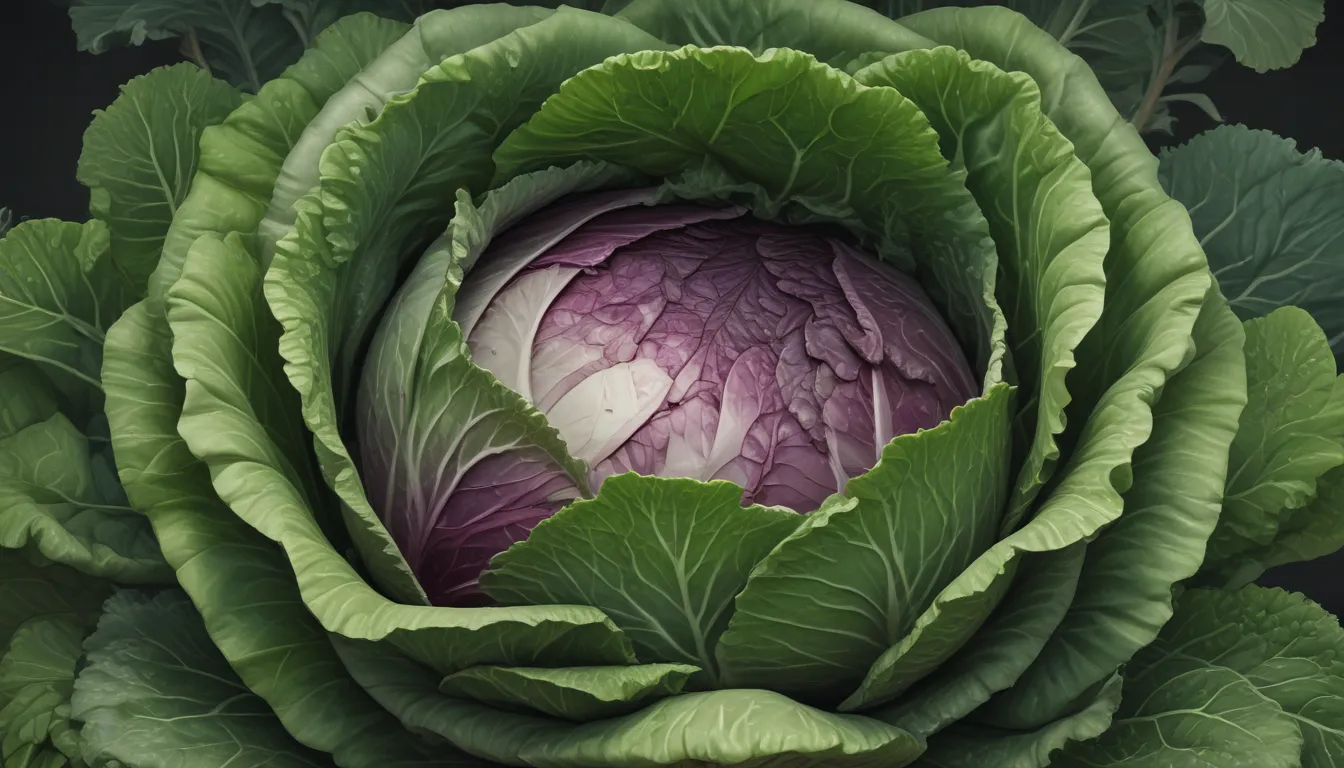The pictures in our articles might not always show exactly what the text is talking about. We use these images to make the article more interesting and eye-catching. They are there to add to the text, but not to replace it or show every detail.
Cabbage, a versatile and nutritious cruciferous vegetable, has been a beloved ingredient in various cuisines for centuries. Its vibrant green or purple leaves and unique shape make it a standout choice for dishes ranging from traditional coleslaw to tangy sauerkraut. But there's more to cabbage than just its culinary uses. In this article, we'll delve into 12 intriguing facts about cabbage that showcase its rich history, health benefits, and culinary versatility.
Unveiling the World of Cabbage
Cabbage, scientifically known as Brassica oleracea, belongs to the Brassica family, which includes other cruciferous vegetables like broccoli, Brussels sprouts, and kale. The word "cabbage" stems from the French term "cabochen," meaning "head" or "cabbage." Packed with essential vitamins and minerals such as vitamin C, vitamin K, vitamin B6, and folate, cabbage is a nutritional powerhouse that also offers fiber, calcium, and potassium.
A Variety of Cabbages Await
From traditional green cabbage to the vibrant red cabbage, the crinkled savoy cabbage to the delicate Napa cabbage, there is a diverse range of cabbage varieties available, each with its distinct taste and texture. This versatility allows cabbage to be utilized in a myriad of dishes, whether raw in salads, cooked in soups, or fermented into sauerkraut.
Cabbage Through the Centuries
Cabbage has been a culinary staple in various cultures for centuries, with its origins traced back to Europe and cultivation by ancient Greeks and Romans. Whether enjoyed as a weight-loss-friendly vegetable due to its low-calorie content or for its potential health benefits like anti-inflammatory properties and improved digestion, cabbage has cemented its place in kitchens worldwide.
Giant Cabbages and Good Fortune
In 2012, a colossal cabbage weighing over 62 pounds made headlines in Alaska as the heaviest cabbage ever recorded. Furthermore, with proper storage conditions, cabbage can stay fresh for months, making it an excellent vegetable to stock up on during harvest season. In some cultures, cabbage is considered a symbol of good luck and prosperity, often enjoyed during celebrations and festivals.
Unlocking the Health Benefits of Cabbage
Studies have indicated that cabbage offers a range of health benefits, including anti-inflammatory properties, improved digestion, and a reduced risk of certain chronic diseases. Its immune-boosting properties, thanks to high vitamin C content, further solidify cabbage's reputation as a nutritional powerhouse. Whether incorporated into stuffed cabbage rolls or iconic kimchi, cabbage plays a prominent role in traditional dishes worldwide.
Bringing Cabbage Home to Your Plate
Cabbage may often be overlooked, but its significance in our diets cannot be understated. From its remarkable health benefits to its rich history, cabbage deserves a spot on your plate. Whether enjoyed raw in salads, sautéed as a side dish, or fermented into sauerkraut, cabbage enriches dishes with essential vitamins, minerals, and antioxidants that promote optimal health.
FAQs: Your Cabbage Questions Answered
- Is cabbage a good source of nutrients? Absolutely! Cabbage is packed with essential vitamins, minerals, fiber, and antioxidants.
- Can cabbage help with weight loss? Yes, cabbage's low-calorie and high-fiber content can support weight loss goals.
- How can I incorporate cabbage into my diet? Cabbage can be shredded for salads, stir-fried, used as a wrap, or fermented into sauerkraut or kimchi.
- Is cabbage suitable for people with dietary restrictions? Generally, cabbage is well-tolerated, but individuals with specific conditions may need to moderate their intake.
- Does cooking cabbage affect its nutritional value? Cooking cabbage may reduce some nutrients, but many vitamins and minerals remain intact.
Exploring the World of Cabbage Varieties
For those passionate about cabbage, there is a world of variety waiting to be discovered. Consider exploring Savoy cabbage nutrition facts to uncover details about this crinkly leafed variety. Delve into the intriguing backstory of cabbage palmetto, a lesser-known cousin with its own unique story. And for aficionados of Asian cuisine, Chinese cabbage facts offer a glimpse into the culinary richness of this versatile vegetable. Each cabbage variety brings its own set of characteristics and health benefits, adding depth and flavor to your meals.
A Final Word on Cabbage
In conclusion, cabbage's versatility and nutritional benefits make it an essential addition to our diets. Whether enjoyed raw, cooked, or fermented, cabbage enriches meals with its array of vitamins, minerals, and antioxidants that support overall health. Remember to include cabbage in your meal planning to reap the numerous health benefits it offers, from aiding digestion to reducing the risk of chronic diseases. Embrace the world of cabbage in all its vibrant colors and flavors, and let this remarkable vegetable take center stage on your plate.
Was this information helpful?
Our commitment to delivering accurate and engaging content is unwavering. Each fact shared on our site is contributed by real users like you, ensuring a diverse and insightful collection of knowledge. Our dedicated editors rigorously review each submission to maintain the highest standards of accuracy and reliability. Trust in our dedication to quality and authenticity as you delve into the fascinating world of cabbage and expand your understanding of this remarkable vegetable.






